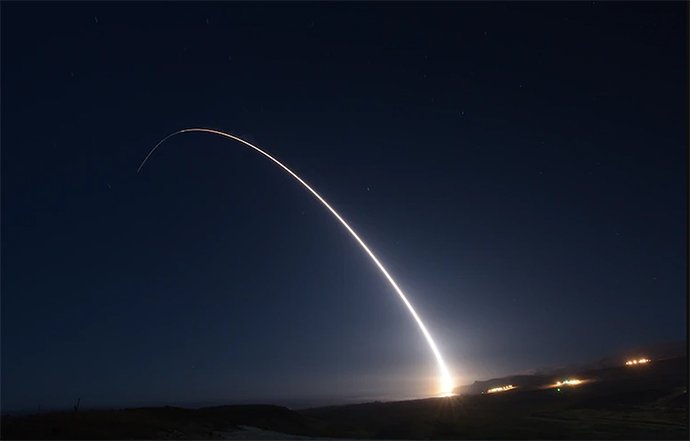The U.S. Air Force tested a “Minuteman-3” intercontinental missile. This is the fourth time the United States has tested this type of missile this year.
According to a report on the website of the US “Military Times” on October 29, the US Air Force tested a “Minuteman-3” intercontinental missile on the 29th local time in the United States.
U.S. Air Force stated that the plan was planned three to five years ago, and the specific test launch began six months to one year ago. The test launch demonstrated that the US nuclear deterrent force is safe, reliable, and effective.
But the test launch is not a response to specific events or regional tensions worldwide.
This is the fourth time the US military has tested the “Minuteman-3” missile this year. The contents of the four launch tests are basically the same, such as the same launch location and the same target location.
The “Minuteman-3” intercontinental missile is the first American intercontinental missile equipped with a split-guide nuclear multi-warhead. The missile began to be equipped with the U.S. Air Force in 1970. It completed 550 deployment tasks in 1975 and ended production in November 1978.
The largest missile The range is 13,000 kilometers. According to the latest information from the Atomic Scientists’ Bulletin, the U.S. Air Force currently has 400 “Minuteman-3” intercontinental missiles, of which 200 missiles are guided multi-warhead vehicles, 200 are single warheads, and land-based nuclear forces have deployed a total of 800 Nuclear warheads.
The US Air Force conducts about five intercontinental missile test fires every year. In 2018, the “Minuteman-3” missile was tested 5 times, and 4 test fires were carried out in 2019.
During the test firing in July 2018, a “Minuteman-3” missile crashed over the Pacific Ocean. This is the latest test firing failure record of this type of missile.
It is worth mentioning that the “Minuteman-3” missile tested on August 4 this year is a multi-warhead version. The test launch was the first time in 27 years that multiple warheads were used in random inspections of active missiles, which aroused the attention of the outside world.



